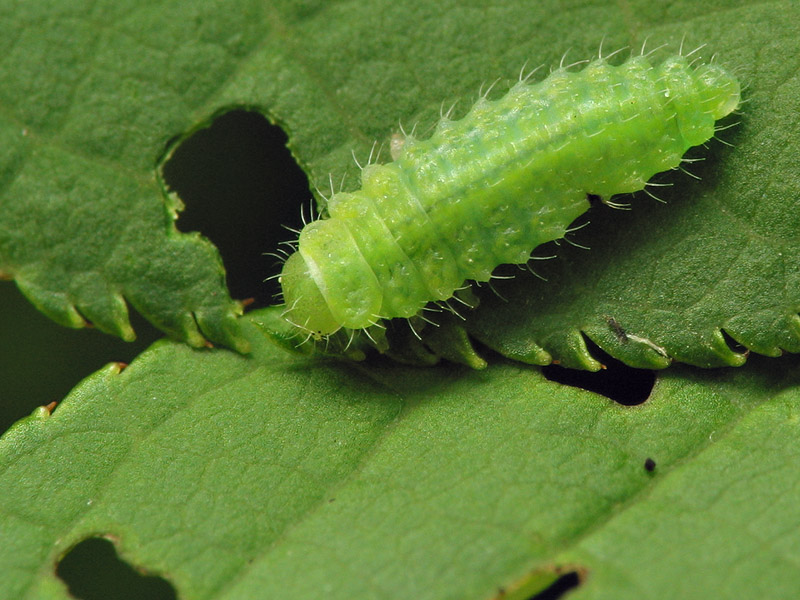
Gonioctena quinquepunctata larva · penkiataškis dygblauzdis, lerva
- Fünfpunktiger Blattkäfer
- olaruskokalvaja
- penkiataškis dygliablauzdis
- szubarga pięciokropka
- häggbagge
It is found in Scandinavia, Central and Southern Europe (in the south in mountains); east to the Russian Far East. Length 4.5 - 8 mm; elytra with rather regular dot stripes, these on the upper side (rows 4-7) in front of the tip either perfectly regular or very little irregular; scutellum yellow or paler brownish; pronotum with coarse dots, more rounded at the front, widest behind the middle; mandibles not hollowed at the sides; last segment of the antennae long triangular, basal segment mostly relatively slender; only the tibiae of the middle and hind legs clearly spined. Elytra in female clearly chagrinated, dull; tip of aedoeagus asymmetrical in male. A similar species is Gonioctena intermedia. On average, this beetle is slightly shorter in relation to its width and more arched. The males of both species can only be distinguished by the tip of the aedoeagus.
Gonioctena quinquepunctata can be found on its host plants from April to August. The species lives on different plants of the rose family (Rosaceae), often on bird cherry (Prunus padus) and on mountain-ash (Sorbus aucuparia). The females produce a relatively small number of offspring. They are at least facultative ovovivipar. In ovoviviparous animals, the embryos develop in eggs that are still in the female body. The larvae hatch shortly after oviposition. The larvae of Gonioctena quinquepunctata appear in April. They eat at the underside of leaves and go through 4 larval stages in 20 - 30 days. The fully-grown light green larvae pupate in the soil. After a pupal period of 15 - 25 days the new beetle generation hatches. In autumn the beetles undertake a maturation feeding and then go into the soil for hibernation.
Similar looking green larvae are also found in Gonioctena intermedia, Gonioctena pallida.
‥
0 comments
Add a comment